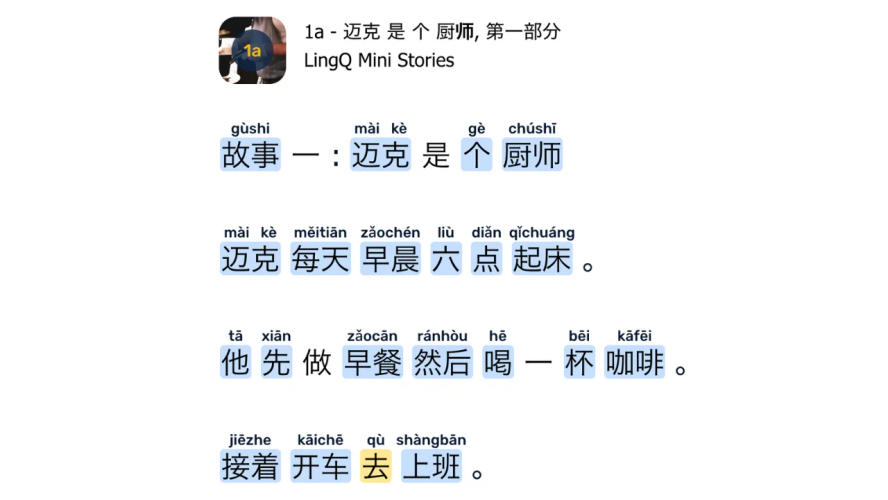I studied Chinese in 1968. At the time I was working for the Canadian Government, the Ministry of Trade and Commerce’s Trade Commissioner Service to be exact. Canada was preparing to recognize the People’s Republic of China and decided that they needed to train some officials in Mandarin.
I was sent to Hong Kong to study. I couldn’t go to the People’s Republic because the country was caught up in the Cultural Revolution. I couldn’t go to Taiwan because that would not have been acceptable to the People’s Republic assuming I would become a diplomat assigned the the mainland. I could have gone to Monterey, California but I chose Hong Kong and I have never regretted it.
Learn Mandarin? It’s Too Difficult
For many speakers of European languages, Chinese appears quite exotic. How can I learn a language that’s from a culture so different from my own? We might think. I imagine that people from different cultures, Asian cultures, for example, may have the same attitude towards learning European or even Middle Eastern or Central Asian languages.
When I was learning Mandarin, one of my friends asked me “what if you can’t learn it?” At that point I had learned to speak French fluently. I knew I could learn one language and felt pretty confident that I could learn yet another one, not matter how different. I was ready for the challenge.
What I have discovered by learning Mandarin is that Chinese culture is indeed fascinating and rich. Once you get into it, via the language, it turns out that it’s by no means inscrutable or strange. It becomes a part of you just like any other language and culture that you learn. You enter a new world that starts to feel natural. You enjoy it, wallow in it, discover it. You climb all over it. It’s a very positive experience.
The Mandarin-Learning Process
Chinese has two outstanding difficulties, and a number of things that make it easy. The two outstanding difficulties are:
- The need to learn Chinese characters.
- The four tones.
How can we deal with these challenges that concern the writing system and pronunciation? I recommend spending the first month of study doing lots of listening to easy content, while reading using the Romanized version of the language, or Pinyin. This will give you some exposure to the sounds and words of the language. You can wait before studying the characters until you have at least some sense of the language. In this way, the characters will relate to something that you have already experienced. This is what I did.
In the days when I was learning Mandarin, we used the Yale form of Romanization, or phonetic writing system using the Roman alphabet. I prefer the Yale system to Pinyin, but the world has now standardized on Pinyin, which is the form of Romanization developed in the People’s Republic of China.
Pinyin has a few strange quirks. For example “q” is pronounced “ch” as in “church”, and “x” is pronounced like a very heavy “s” or light form of “sh”. It means if a Chinese person hands out a name card and their name is Quan or Xi, anyone not familiar with Pinyin will be unable to pronounce their names. I don’t know why they’ve done that, but that’s what they’ve done so you have to get used to it.
A month of Pinyin is more than enough to get used to this writing system. If you do a lot of listening and reading using this phonetic script, you will have a base of comprehension of the language with a reasonable starter vocabulary, at least aural vocabulary, from which to start learning characters.
Cracking the Characters
First of all, accept that learning the characters will be a long journey. You will forget them and relearn them many times until they start to stick. The task of learning to write and remembering each of these characters, each with five, eight or even 15 individual strokes, may seem impossible at first. It isn’t. Just get started.
I will explain how I tackled characters 50 years ago, but there may well be better methods out there today. I used squared exercise books used by Chinese school children and a set of cardboard flash cards of the most frequent 1000 characters, beautifully hand written by one of my teachers. I still have the flash cards, and I treasure them.
I’d pick up a flashcard of the first character, write it out 10 times and put the meaning or the sound, the pronunciation, two or three columns to right. Then I’d take another card and write the character out 10 or 20 times by hand, and again put the English meaning or sound a few columns over to the right. Soon, by writing out the characters longhand, l ran into the pronunciation or meaning of the first character. I would write it out again five or so times and move it a few columns to the right again. I just kept on doing this. It was a very basic kind of spaced repetition system.
I started at learning 10 characters a day and eventually got up to 30 a day. Of course, I knew that I was going to forget two-thirds of what I learned. I had to keep on shuffling the previously “learned” cards back into my deck. I knew that language learning is a process of learning and forgetting. Like so much in language learning, at first it seems impossible but it’s amazing what the brain will eventually learn if you stay with it.
I made a point of working on my characters every day. My thinking was that if I just kept doing it daily I wouldn’t slip back or forget as much, and therefore I would eventually get there. I used my technique for the first 1,000 characters. Thereafter, whenever I met a new character in my reading, I just wrote it out a few times. I was reading a lot, and also writing a lot, so my character count just grew naturally along with my improvement in the language.
The characters consist of components, some of which indicate the meaning and some of which give a hint to the sound. These are not always obvious, nor always reliable nor even useful. At first you don’t really see them, despite the explanations from the teachers and textbooks. But as with so much in language learning, with more exposure, you become more observant. Soon you notice the components better and they help you in learning new characters. At least that was my experience.
People ask whether it is better to learn traditional or simplified characters. It depends on where you’re going to be. At the very least, learn simplified if you’re going to be involved with mainland China. The vast majority of Chinese people in the world, especially those in China, use the simplified system. On the other hand, if you are going to be in Hong Kong or Taiwan you will need the traditional characters.
I started with the traditional and then moved to simplified, which is actually an easy way to go. Once you have the traditional characters, you can easily learn the simplified. It’s kind of handy to have both. Whether you’re in China, Taiwan or Hong Kong you can pick up the newspaper, read it and understand it.
The Four Tones
We have tones in English. However, we use tones for emphasis. In Chinese, tones are used to distinguish the meanings of words. At first it is difficult to get used to this. Your first task is to recognize the tones when you hear them, and eventually to be able to use them when you speak.
If you start reading with Pinyin, you will probably have tone marks for each tone. Later on when you look up new characters in a dictionary, you will usually be able to see the Pinyin and tone marker for that character. At LingQ you are able to set the text in such a way that Pinyin with tone marks appears above the Chinese character text. This is very useful.
As you listen and read, you start to understand more and more, and this means that you are noticing the tones, or at least distinguishing words. Chinese is no longer just noise. In learning any language, the first objective is to convert these strange new sounds into meaning. A more difficult task is to use the tones correctly while speaking, on the fly so to speak.
It is hard to remember the tones for individual characters or words while speaking. It is best to try to learn the tones not so much as individual characteristics of each single character, but rather as part of groups of characters or phrases. This is easier than trying to remember, while speaking, “is this first tone, second tone, third tone or fourth tone?”. If you get used to the combined intonation of certain words in phrases and the intonation of these phrases, you’ll eventually start improving. You don’t want to be so tongue-tied and hung up about the tones that you can’t speak.
I found that my tones improved over time and it was a constant battle. I might have been hitting them 40% at first, then it just gradually moved up and maybe I’m now at 80%. Sometimes if I get excited and am keen to say something, my inclination from English to put the tone where the emphasis is can take over and corrupt my Chinese tones. That is something to be careful about.
To get the tones right, you need to be attuned to the overall intonation of the language. I found that listening to my favourite Chinese comic dialogues, Xiangsheng(相声)as they are known, was a great help to me. These comedians exaggerate the intonations of the language, and even if I didn’t always understand what they were saying, I found their rhythm infectious. You might want to give that a try once you have enough vocabulary.
Chinese Vocabulary Acquisition Is Relatively Easy
In Chinese, a word as we understand a word usually consists of two and sometimes three characters. These are known as compound words. If you know the characters in a new compound word, you can often figure out the meaning. At the very least these new compound words are easier to remember. So for every character you have, you potentially have three, four or five words. You can combine these characters like building blocks to form two-character or three-character words or even phrases.
To some extent this is true in many languages, but in no other language that I know is it as obvious. As long as you keep working on acquiring new characters, this multiplier effect on your vocabulary growth can continue to work to your advantage. I was able to read advanced material in Chinese fairly quickly, newspapers within three months and a novel after six months of full time study, albeit with the help of a dictionary or word lists.
Chinese Grammar Is Straightforward
The structure of Chinese is actually very rational. In its simplicity it’s a very efficient language. Verbs don’t change their form for tense, person or number. Nouns have no gender, nor even a plural form. Word order is similar to English.
As in every language you should focus on learning the ‘w’ words: why, where, when, what, who, as well as connecter words like the equivalent of “since, because, although, nevertheless” etc.. Learn the patterns in which they are used. I avoided complicated grammatical explanations that I found in Chinese grammar books. Often the writers of these books invent new terms to account for the patterns of Chinese. This is unnecessary. All I focused on was patterns, particularly in regards to the question words, why, when, where, what, who and the connector words.
Another thing you will discover is that in Chinese they don’t really have relative pronouns. So instead of saying “the house which is on the hill”, they’ll say “the on the hill house”. You’ve got to get used to that.
So to summarize, the grammar is pretty straightforward and the vocabulary building, once you have characters, is quite efficient. This idea of an inscrutable, exotic, strange, language is simply not true. The main thing is to get started, and not allow yourself to be intimidated by the characters and the tones.
Go out and Discover the Chinese World
Push yourself to get into interesting reading and listening content. When I studied Chinese we did a lot of reading of Chairman Mao and Communist literature because the Cultural Revolution was taking place in China. I was able to follow the “Gang of Four” and political struggles within China.
However, what I enjoyed the most was the Chinese literature of the twenties and thirties. It was fascinating to see how traditional China, the China of the Qing Dynasty, all of a sudden encountered the Western world. It’s quite astounding to me how quickly intellectuals, thinkers, political thinkers, novelists and others responded. There was this outpouring of intellectual production in China throughout the twenties and thirties, despite the turmoil in the country: warlords, a continuous civil war, invasion from Japan, and the management of foreign colonies, hunger, famines and floods. Chinese thinkers and leaders struggled to recover order, unity and pride in their country.
I want to read more about Chinese history. Chinese people are very much aware of stories that come out of Chinese history from as far back as 2,500 years ago. People make frequent reference to philosophers, sayings and stories from their history in everyday speech. Learn Mandarin and a fascinating world awaits you, not to mention the chance to get involved in a constantly evolving modern China.
When I studied Chinese, mainland China, or the People’s Republic of China, was more or less closed to the outside world. People were afraid to talk to you. Now you can go there and make friends. You can go to restaurants and bars and meet people. You can easily engage with people on trains and elsewhere. The Chinese like to talk, and are most willing to chat with you and encourage you in your Chinese.
The country is surprisingly modern in many ways, and continues to grow and develop at an amazing speed. There are problems. There is corruption, pollution, lack of democracy and all those other things, but it’s alive, bustling and the Chinese are approachable. So what are you waiting for? Get going and learn Mandarin.
Want to learn Mandarin from content you love?









2 comments on “Tips to Help You Learn Mandarin”
Comments are closed.
Learning a new language as Manderin is very hard! Thanks for sharing your tips, very helpful.
the blog post is nice! the mandarin is easy to learn and because of its similarity with Chinese this makes your Chinese language improve if you want to learn it, thank you sir for such important knowledge